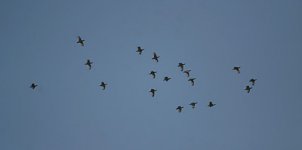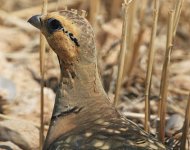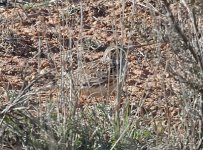Suppression?
What is the point of posting pages and pages of tips to assist people to see such birds, then try to suppress locations
That's a bit reactionary, I think. You certainly answered within seconds of my posting and before I had finished editing it (to try and choose my words carefully) so I doubt you had read it properly.
I would ask therefore that you please read it again, Jos.
I didn't say site information should be suppressed at all so your points are all invalid.
I simply appealed for (specific, added afterwards) site information not to be posted openly, to anonymous people, but rather to people to whom you can attach a name.
Isn't it easy to Private Message or Email someone after reading a trip report on this group for instance?
So there is no suppression. The same amount of people can have the information but they get it after one more small step. And, by having to request it, there is a psychological difference in knowing someone knows you're there, that might create a kind of 'peer pressure' block to some very tempting inappropriate behaviour which, it has to be said, I witness a lot.
My response to this behaviour, and the point, to answer your question, is to try and protect birds. Whether it works or not I don't know but despite your protestations that 'there is no evidence', it is my belief that it would make a difference so I'm giving it a try.
Something has to be done. Things are getting very bad.
And I've put a hell of a lot of work into it, by the way, so I'll ignore your personal attack. Except to say, do you SERIOUSLY have such little faith in people's intelligence that you think they'll book a tour just because I've added, 'Book a tour' at the end?! I'm sorry if I caused you offense, Jos, but can I politely suggest you re-engage your sense of humour? And after I even added a winky eye to help you.
"it is frequently guides that demonstrate the poorer behaviour". Frequently? Really? On what do you base this quantitative statement I wonder. On reflection, don't you think that's just a bit reactionary too? I have seen some appalling behaviour by guides but, personally, I suspect that the percentage of people who exhibit such poor behaviour is about the same across all sections, whether they're a guide or not.
Anyway, there you go. That is where I will leave it. People are free to judge as they like and I make no apology.








